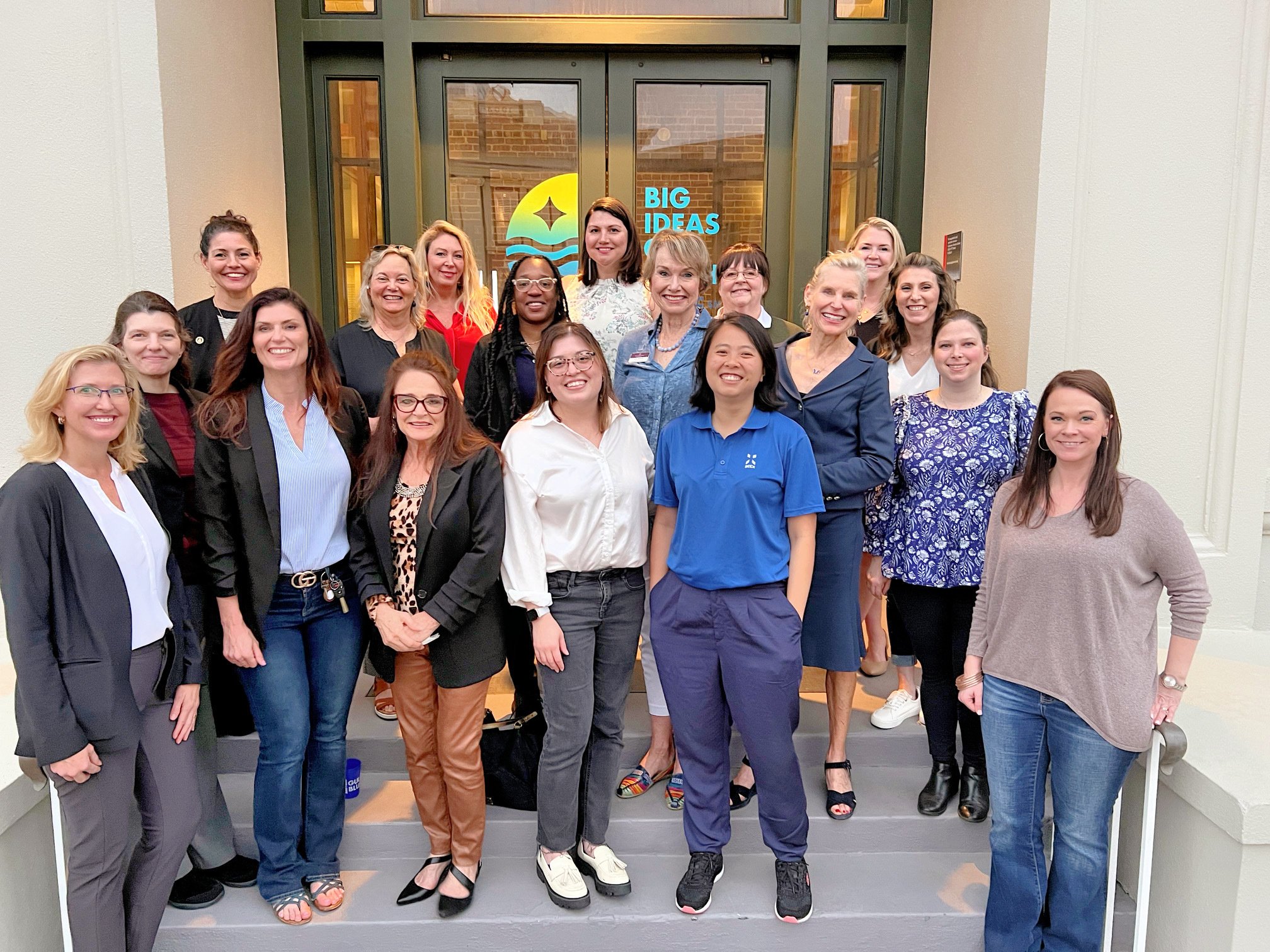Big Ideas out of the (Gulf) Blue
Written by Hailey Bathurst, Gulf Blue Navigator Program Manager
It’s officially the second half of our pilot program, the Gulf Blue Navigator – can you believe it? The program’s kickoff last November was the result of three years of hard work to build on the potential of the Gulf Coast as a bluetech hub. The Gulf Blue Navigator (GBN) program brings post-pilot bluetech startups to the Mississippi Gulf Coast to provide unique access to expertise, collaboration, research, testing, manufacturing, funding, and physical infrastructure.
Each month, the six startups in our pilot spend a week on the Gulf Coast. They hail from around the globe – California, Massachusetts, Georgia, the UK, and Singapore – and will have plenty of Frequent Flyer miles to use on vacation after Demo Day in May!
Hurricane Katrina horribly battered the Gulf Coast, and we’re still understanding its far-reaching consequences. However, necessity breeds innovation. You might be asking the same question we’re trying to answer: Why Mississippi? Networking events and startup culture are not new to the East and West Coast. The Gulf Blue Navigator program is exciting because it’s new. How often do you get to build something from scratch with enthusiastic and resourceful partners?
GBN Program Manager Hailey Bathurst speaks at SXSW on maritime innovation and the Blue Economy
The first half of GBN focused on networking with US government agencies, specifically the National Oceanic and Atmospheric Adminisration (NOAA), NASA, the Navy, and the Naval Research Lab. Together with our startups, I’ve discovered that NOAA is an invaluable early adopter, especially since the launch of GBN coincided with Dr. Richard. W Spinrad’s, the Under Secretary of Commerce for Oceans and Atmosphere, focus on ocean data in the New Blue Economy as the theme of NOAA’s 2022-2024 strategic plan.
Working with government agencies brought some challenges. Through many conversations with kind and supportive federal employees, our startups found that it takes the government a long time to make decisions, even ones as simple as purchasing new products. And when they do purchase, it’s for ten units, not thousands.
However, it’s not all for naught – one of our companies is currently testing with the Navy in Bahrain. Not only will this exposure bolster their credibility to open doors to new customers, but it also positions them as government suppliers for years to come.
The Gulf Blue Navigator’s success would be impossible without our partner, the University of Southern Mississippi (USM). As a Massachusetts native, USM’s been an invaluable tour guide for me. Often, government agencies don’t purchase or test directly with a startup, but they will work with an intermediary like USM. As a well-respected leader of the Gulf Blue Innovation program, USM has opened many doors that otherwise would’ve remained closed.
Our stellar female bluetech leaders at a “Building the New Blue Economy” networking event
Over the last few months, we’ve realized that GBN provides invaluable market insight; identifying a target market largely relies on understanding it. When we met with the fishing sector, we asked how it’s structured, what are the challenges, and what are the opportunities for new technology to streamline their operations. The second half of the program will explore new customer segments relevant to the entire Gulf Coast.
Another unforeseen advantage of the Gulf Coast: the cuisine. After several long days of workshops each month, the six startups get to sip on some Gulf Blue Oyster Stout and nibble on Southern snacks while chatting with Blue Economy players in the historic Gulf and Ship Island building.
We look forward to bringing Cohort I over the finish line on May 3. The market insight and prototype deployments accomplished by our startups will show everyone “Why Mississippi?”…if the Southern hospitality doesn’t speak for itself. See you at Demo Day!



